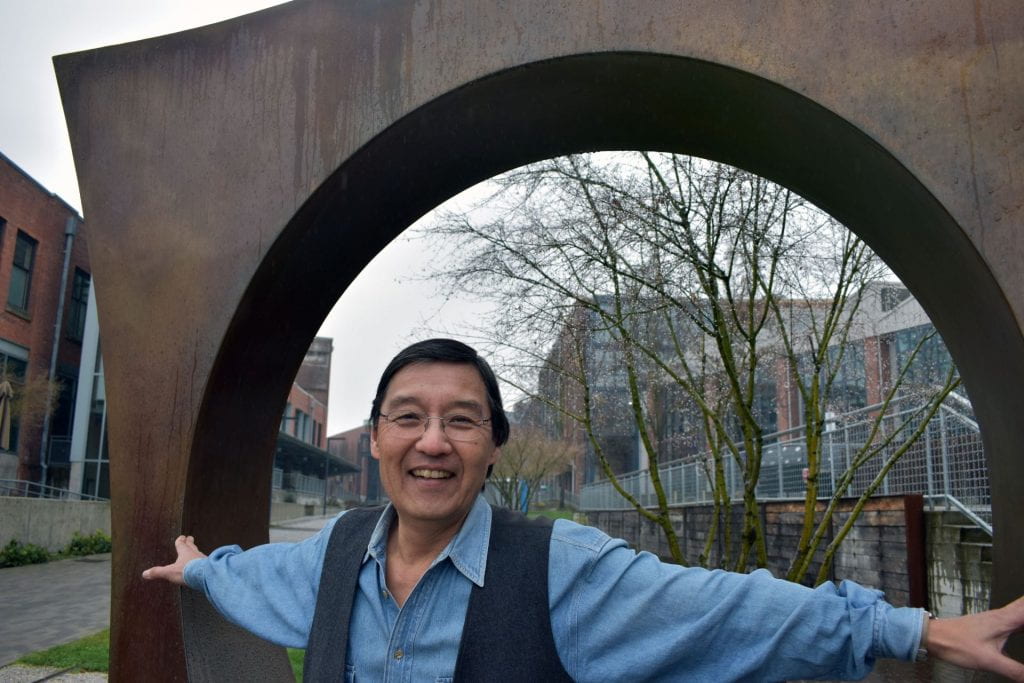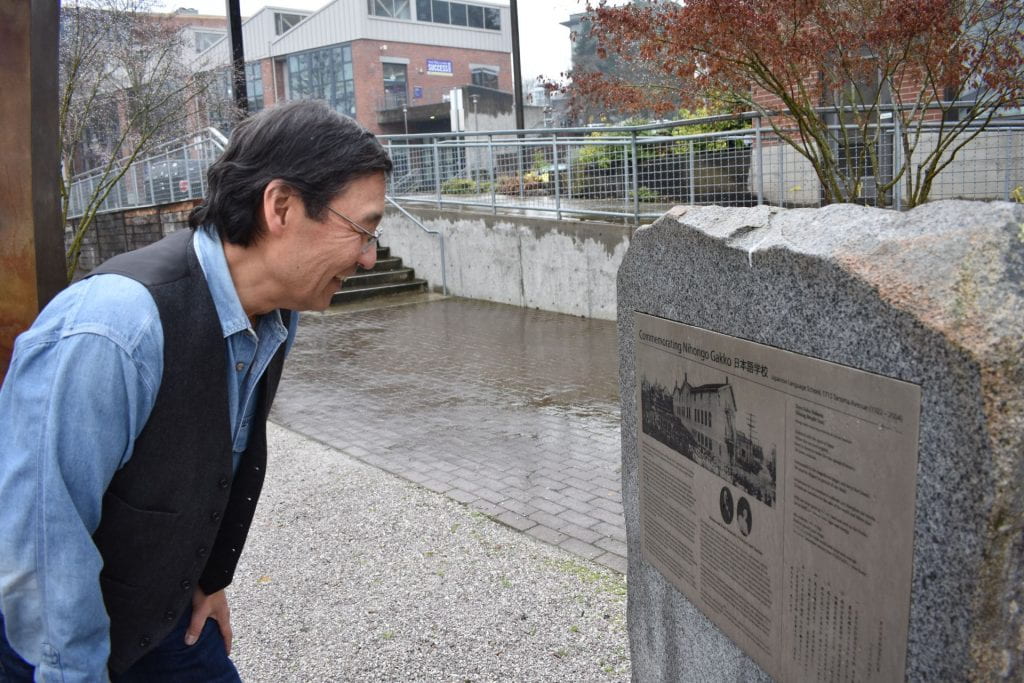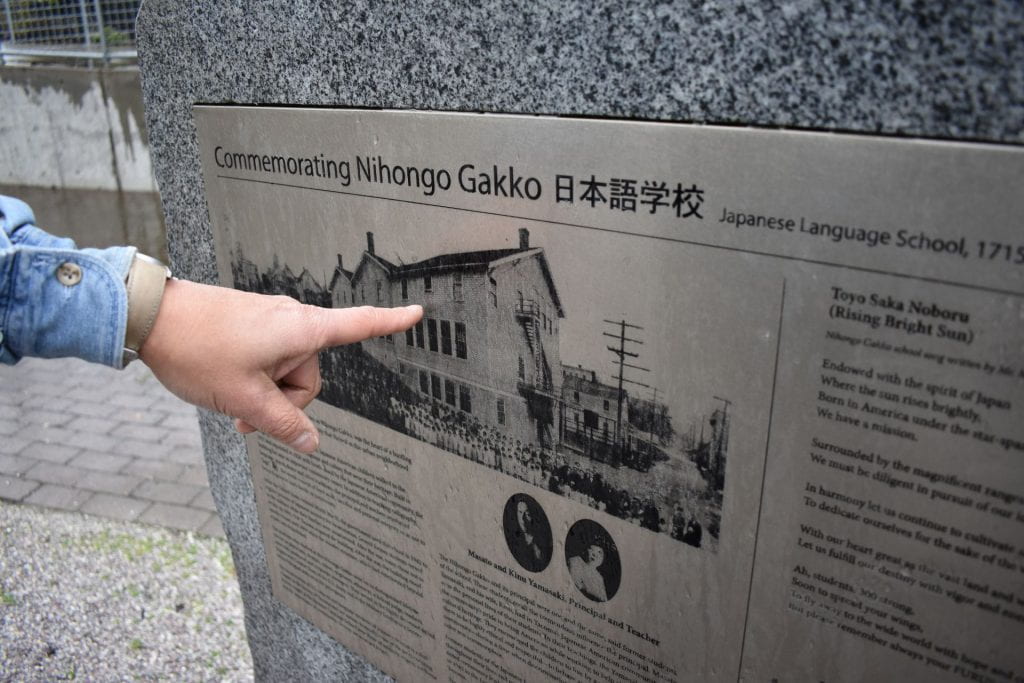“I think things evolve and change out of what was before. And then we also need to know that maybe what we think is good today is not going to be so good tomorrow. And that’s what the university reminds me of.” —Greg Tanbara

For the Library’s UW Tacoma Oral History: Founding Stories project, the locale is a significant dimension of the campus history. Many narrators we have interviewed talked about the transformation of downtown Tacoma and historic preservation of the warehouse buildings. Remarkably, the current UW Tacoma campus footprint also overlaps with Tacoma’s old Japantown, which flourished from the late 19th century until the forcible removal of its Japanese American residents during World War II.
The history of UW Tacoma is multidimensional, and so are its connections with individuals. As a longtime Tacoma resident and sansei (third-generation Japanese American), Greg Tanbara has witnessed firsthand the staggering changes in downtown Tacoma over almost seven decades, some of which have been catalyzed by UW Tacoma after its establishment in 1990. He has also intersected personally and professionally with myriad strands of UW Tacoma’s founding history.
I interviewed Greg earlier this year for the Founding Stories project. The full oral history is 1 hour and 36 minutes long, or 23 pages in transcript, but our conversation could have lasted much longer. I am sharing some excerpts of the interview here. The full oral history is available in UW Libraries Digital Collections.
As one of the few vestiges of Japantown, the structure of the Japanese Language School, or Nihongo Gakko, stood prominently at 17th Street and Tacoma Avenue through the 20th century. In the 1950s, Greg Tanbara and his family lived briefly in the building in the old teacher’s quarters. In 1993, UW Tacoma acquired the building from Tadaye and Leo Kawasaki, Greg’s aunt and uncle. Unfortunately, the building was eventually demolished in 2004 after a team of architects determined the wooden building had deteriorated beyond repair.
Greg played a role in the creation of a nine-foot-tall bronze sculpture, Maru, memorializing the Japanese Language School. The memorial sits on the northern edge of the UW Tacoma campus, along the Prairie Line Trail.
During the oral history interview, he recounted memories associated with the Japanese Language School building.
So when we were there, much of the teachers’ quarters was being used for storage. […] We used to do a little roller skating in the Great Hall. That was a lot of fun. Because you could make a lot of noise, and there were a lot of echoes in that hall. So that’s kind of what I remember. At the time that we were staying there, my grandmother owned the building. She had purchased the building before World War II, just after, I think, Pearl Harbor. She had the ability to do that, and she wanted to preserve it for folks after World War II if they needed to use it. And a lot of people were stashing their stuff there during internment. So I remember, in later years, I would go in there. Once in a while, my uncle Leo, because he really, you know, kind of looked after the building after they returned from, after he got married and they returned from internment camp. So, because people were breaking in every once in a while into the building because it wasn’t being used that much. But we’d go in, and there were rooms, classrooms, on the alley level, that were just chock-full of things. Just people’s stuff. Steamer trunks. I remember seeing kimonos down there. Lots of personal things.
…
So my sister and I would goof around there. That’s the place where I first watched television. So I remember it was black-and-white television. And one story that my sister and I end up enjoying—get a big laugh out of all the time—is, you know, I was telling you how that hall is all set up … So in order for us to get to the television, we had to get past my parents’ room. We had to basically sneak through our parents’ room. So Saturdays, they used to have cartoons on television. These were black-and-white cartoons. And so we would get on our stomachs, and we would scoot ourselves along on the wooden fir floors to get past my mom and dad, who were still asleep, and then we’d go in and turn the television on really low and and watch cartoons.


In addition to the Japanese Language School building, I asked Greg about the siting of the UW Tacoma campus in downtown Tacoma. Greg worked for the Washington State Employment Security Department from 1978 until 1985. This coincided with the time during which community advocates were lobbying at the capitol to bring a public university to Tacoma. In Tacoma, the Save Our Station movement to restore the Union Station building and other revitalization efforts were gaining traction around this time, and the Economic Development Board, the Executive Council, and other groups were endeavoring to boost the city’s economy.
I remember a conversation about two universities looking at downtown Tacoma: University of Washington and WSU. And WSU was pretty aggressive because I think that they had an extension out in Puyallup already. And we’re kind of trying to build off of that. And then something happened. It was a plane [helicopter], or something about a plane ride. Yeah, that’s how the lore goes. And then the University of Washington said, “Yep, we need to do this.”
Urban renewal knocked down a bunch of a bunch of buildings. And I think people were kind of wondering, you know, “Is it going to always be that way?” And it was about ’85. Also that the EPA declared Commencement Bay a Superfund site. So it’s like, “Uh-oh, got to figure out something.” So there were a bunch of things that came together at that time. And I think the decision by the university to come here was … initially people were going, “Oh, what’s that mean?” I mean, is it going to be like a UW campus, you know, brick and Ivy, down here? Or maybe they should move into some vacant land up by Tacoma Community College or, you know, maybe it’s over … it ought to be someplace else. And I think about that time—also the Tacoma Dome comes up and is built. So I think, you know, a lot of people—and I agree with them—the university deciding to come here was a very pivotal point in the city’s downtown development. I mean, it is like, I don’t know if the direction was headed in that way, but it gave it the kind of nudge that got people thinking about things like, “Oh, well, what about museums? Or what about, maybe, you know, we figure out how to purchase all that property around a Foss Waterway and turn it into something else.” And I think to a certain extent, places like Point Ruston, and all those other things leverage off of some of that change in perception in the downtown area.
At the end, he remarks on the university’s interest to reuse buildings in the warehouse district. This inspired a reflection on how Maru symbolizes memory of the past and a glimpse into the future, and Greg said this is what the university’s presence in downtown Tacoma represents to him as well.
I think some people were going, “What’s the big deal about that?” But I think that’s become a big deal. [...] It reminds me that things change and that there is this creative tension between preserving the past and looking to the future. It’s not a thin line. It’s a very gray area that I think gives people an appreciation for what’s going to come by knowing something about what has happened in the past. So, example is, in fact, I was just describing this to somebody the other day: If you take a look at Maru, you get this big, round void in the middle. And the way I think about that is, I look through one way, and I see the Prairie Line Trail going up and kind of off into the distance, and I’m reminded that the Northern Pacific Railroad—that was one of the first lines into the city here. And one of the significant things is, it has, what is that, two-percent grade someplace, which was the steepest grade I guess as they came across the continent. So it’s big deal there, and it’s the terminus.
And you look through the other way, and you see the art museum and the Foss Waterway. So there’s this thing about looking one way and then looking the other, maybe looking at the past and getting a glimpse of the future, that the university really represents to me. I mean it, you know, you get the old buildings, but they’re repurposed, but they’re not going to be the same thing that they are today forever, just like they aren’t the same thing that they were yesterday today. That’s I think an interesting thing. And an important thing for people here in Tacoma because … I thought, you know, the other—you were asking about significant things—when the university came, it was about, you know, that the SOTA school [Tacoma School of the Arts] opened about, you know, in that same kind of rough timeframe. And I think the combination of UW students and the SOTA students downtown, it made all the rest of us look forward and behave a little bit better than we were in the past. You know, we kind of say, “Oh, you know, Pacific Avenue is a bunch of strip clubs. It’s always going to be a bunch of strip clubs.” It didn’t have to be that way. I think things evolve and change out of what was before. And then we also need to know that maybe what we think is good today is not going to be so good tomorrow. And that’s what the university reminds me of.